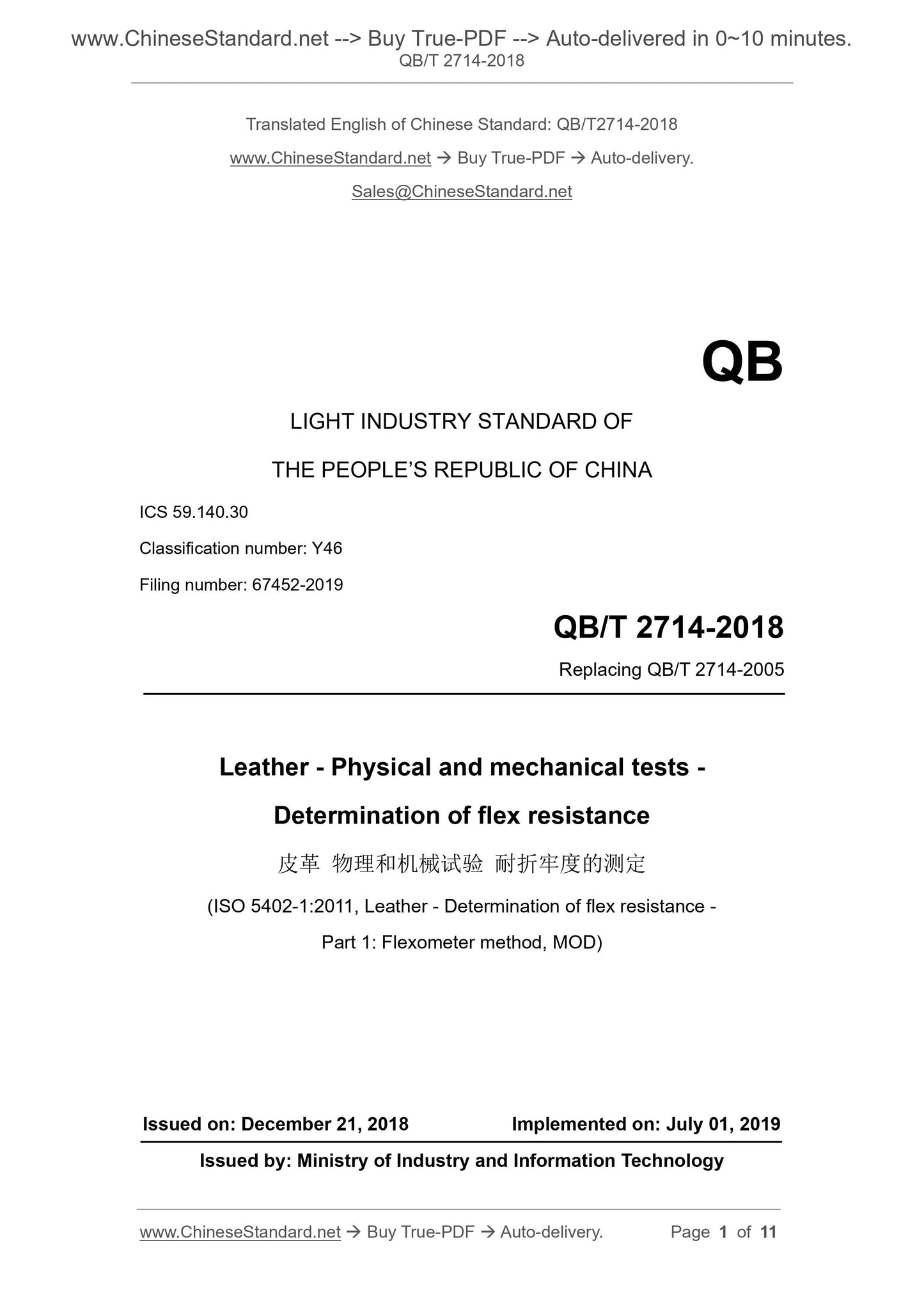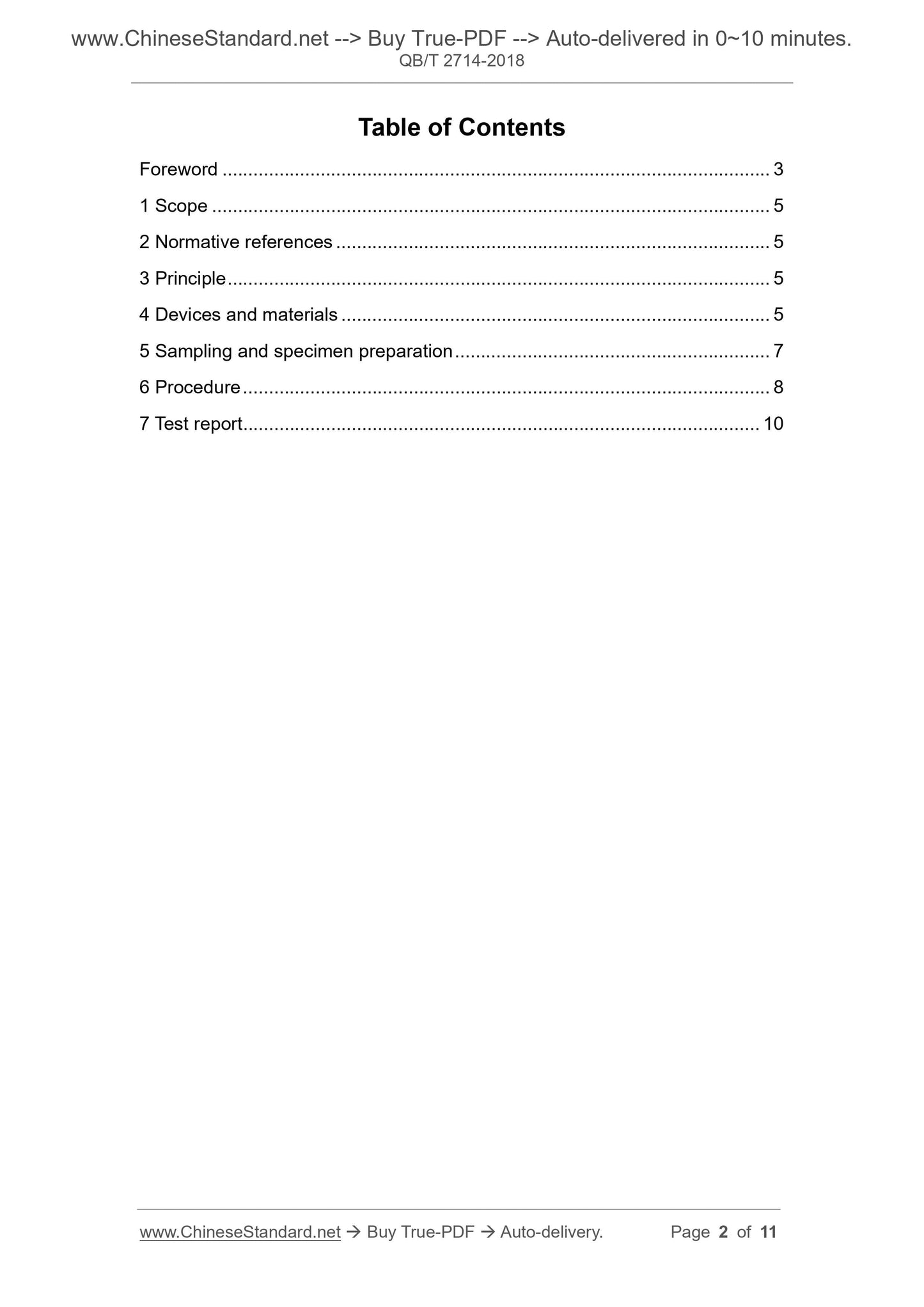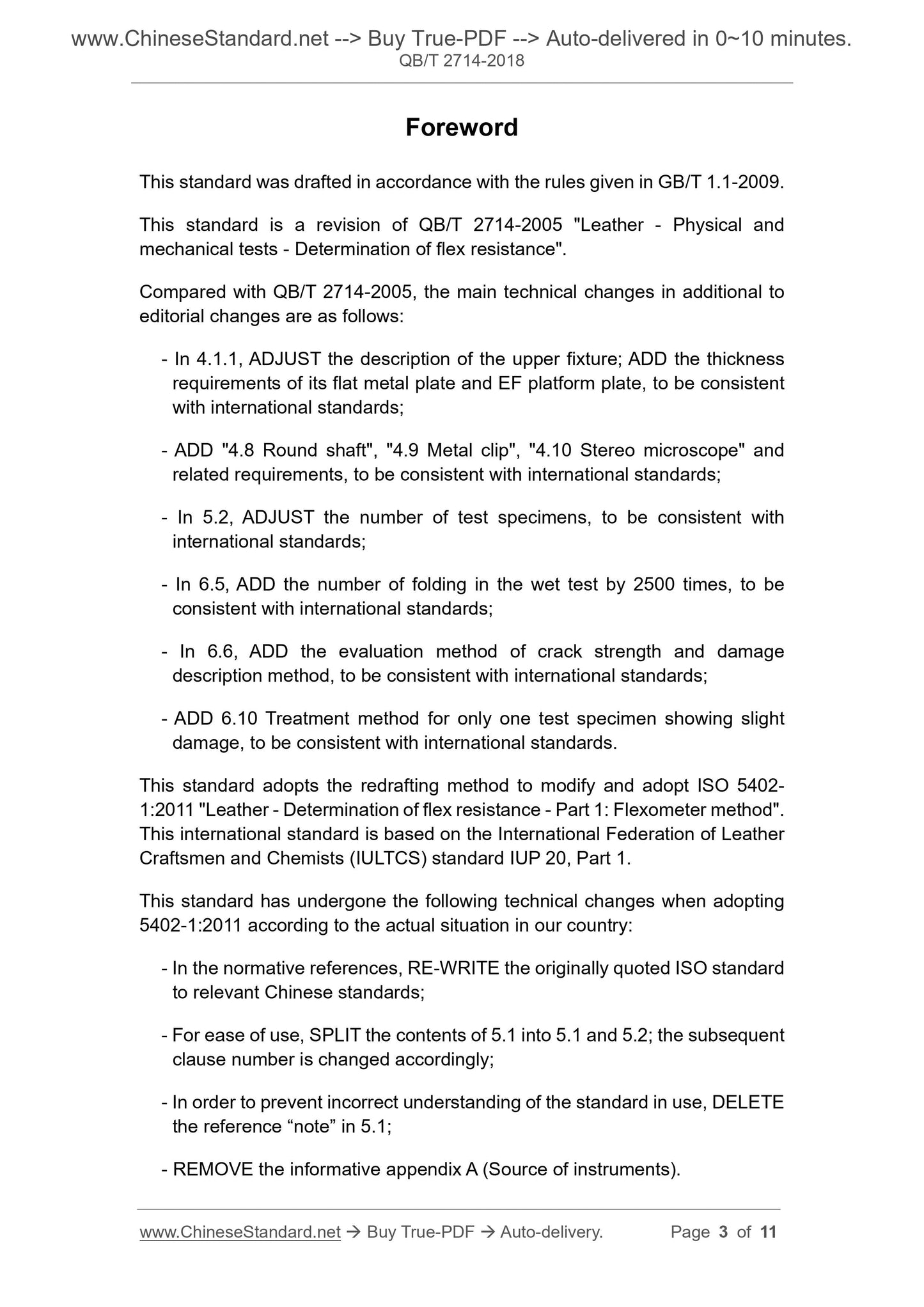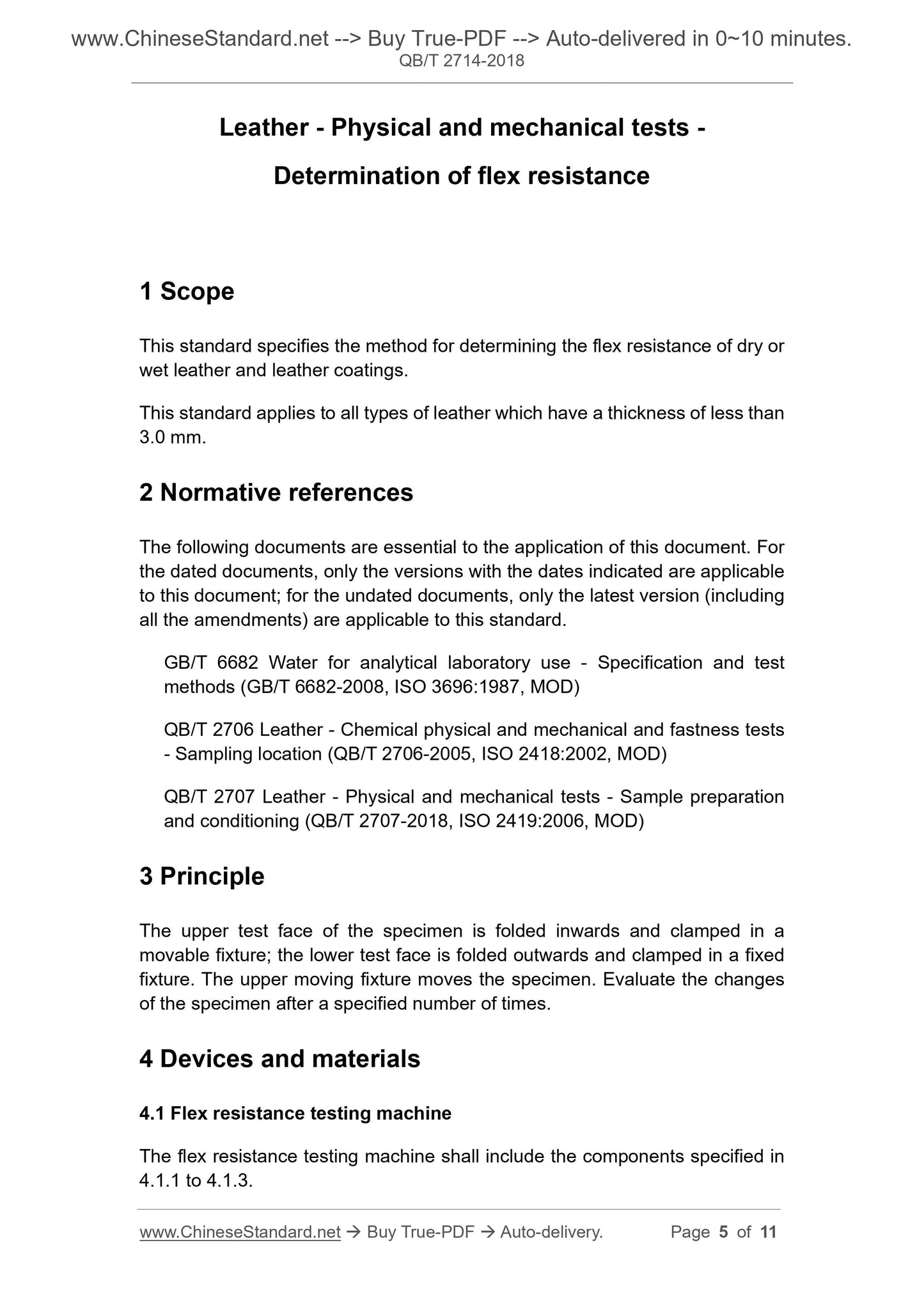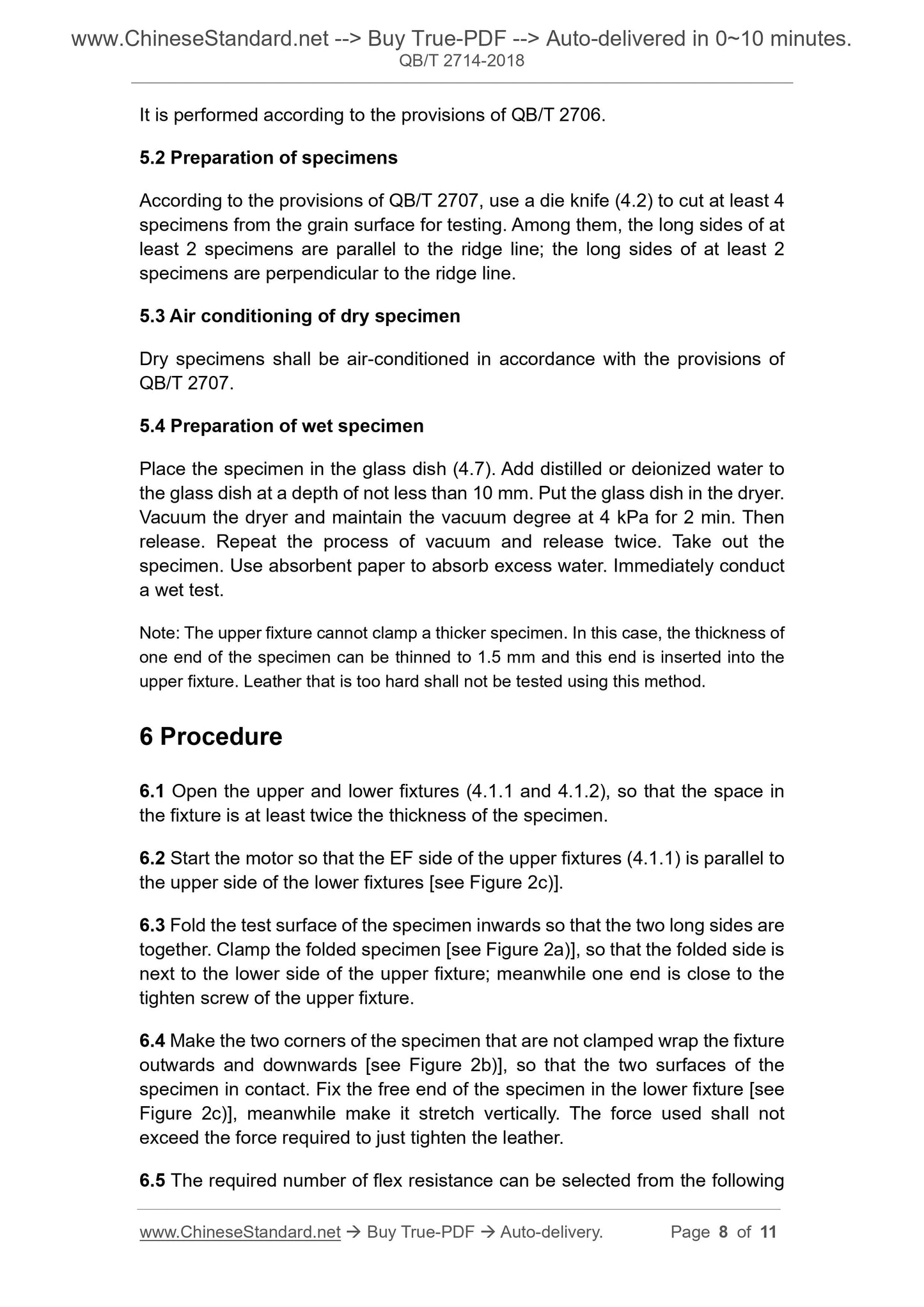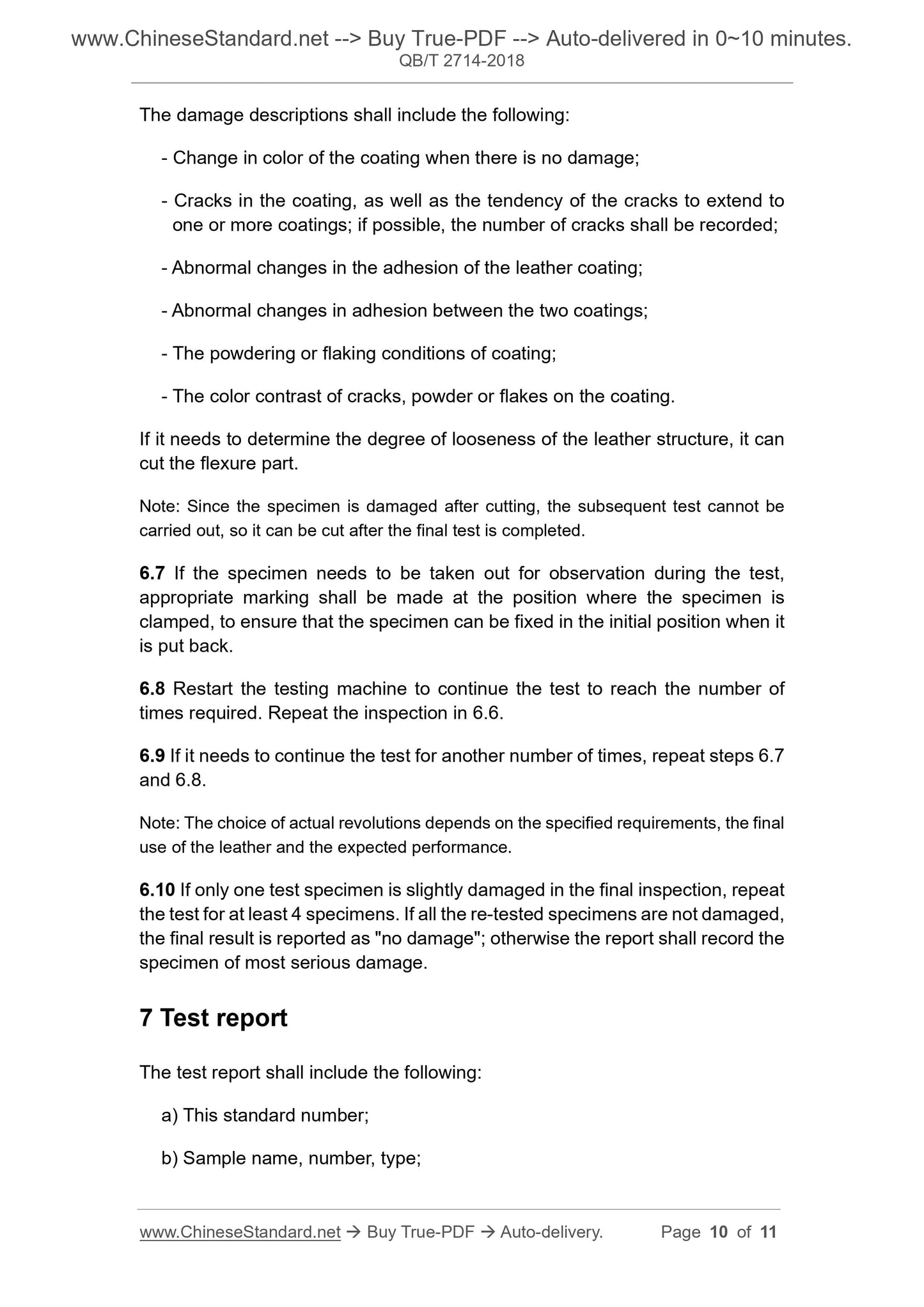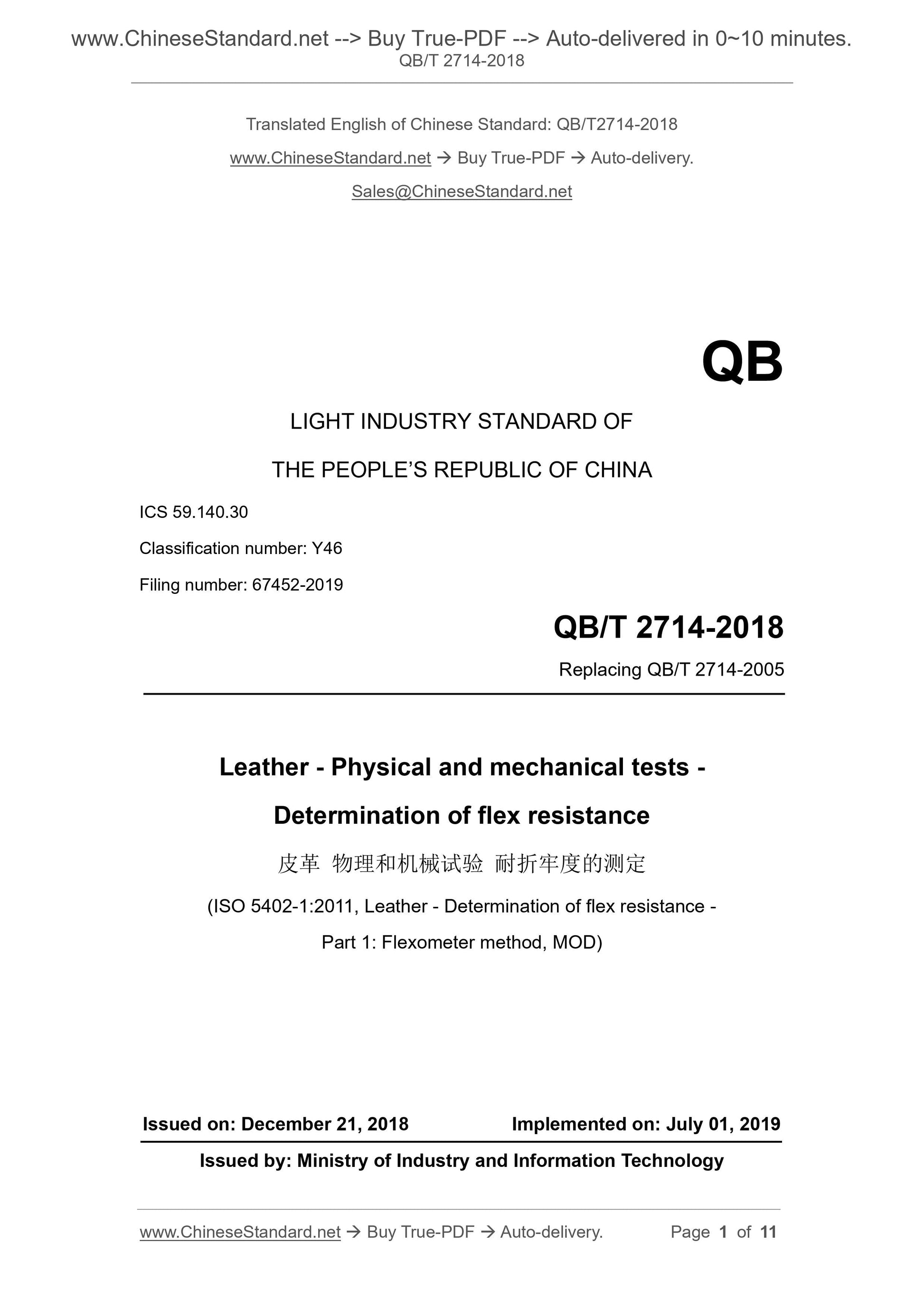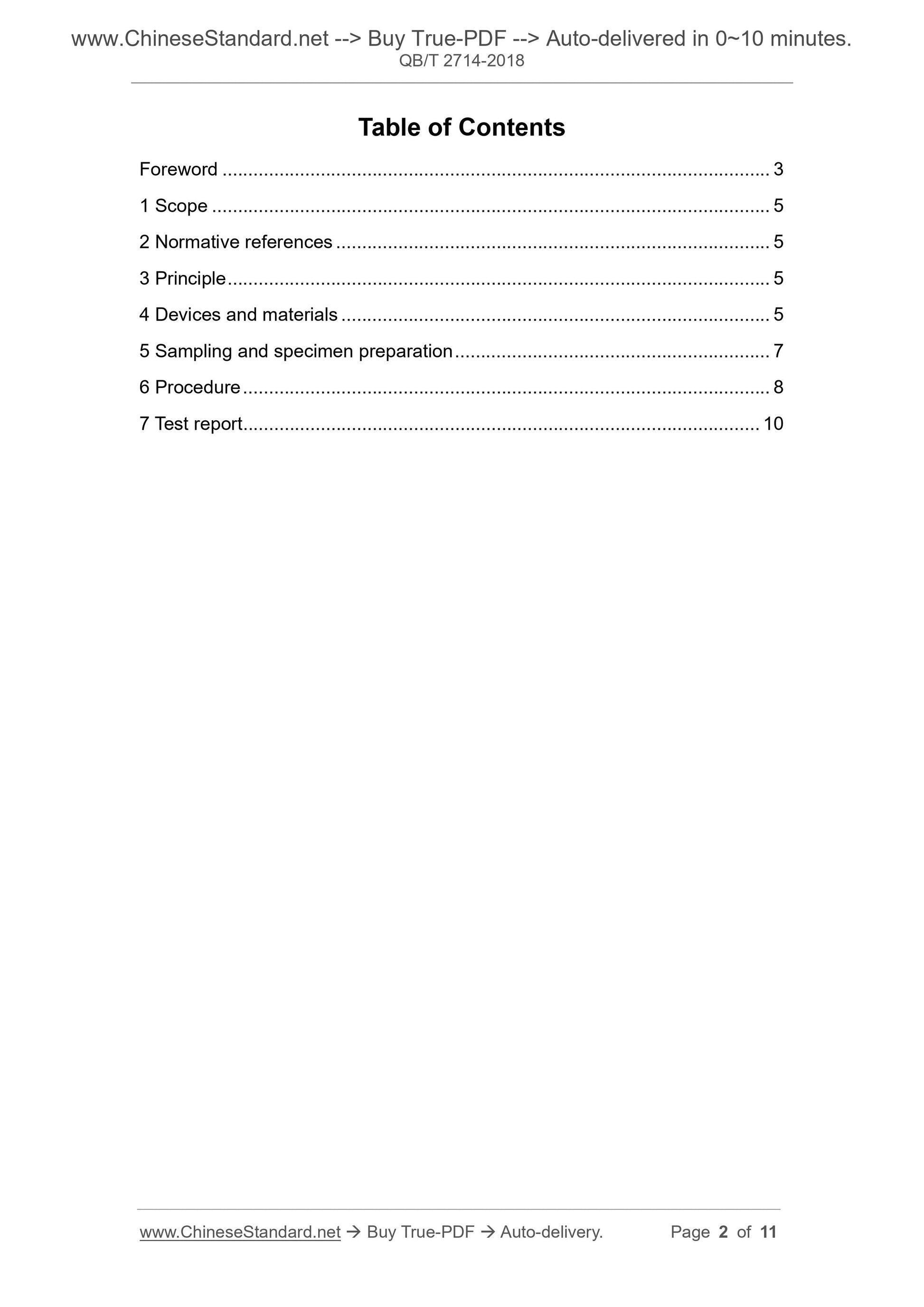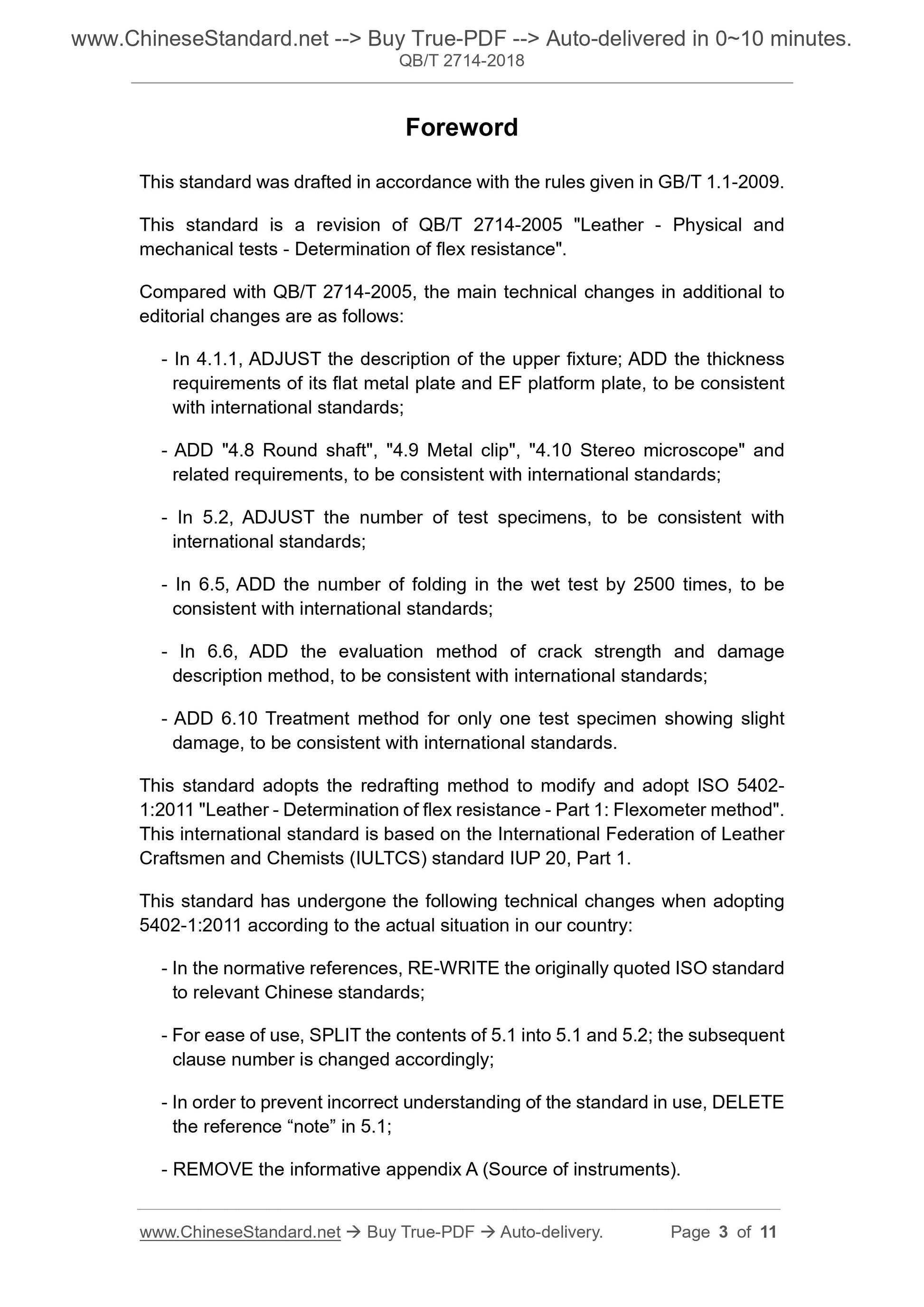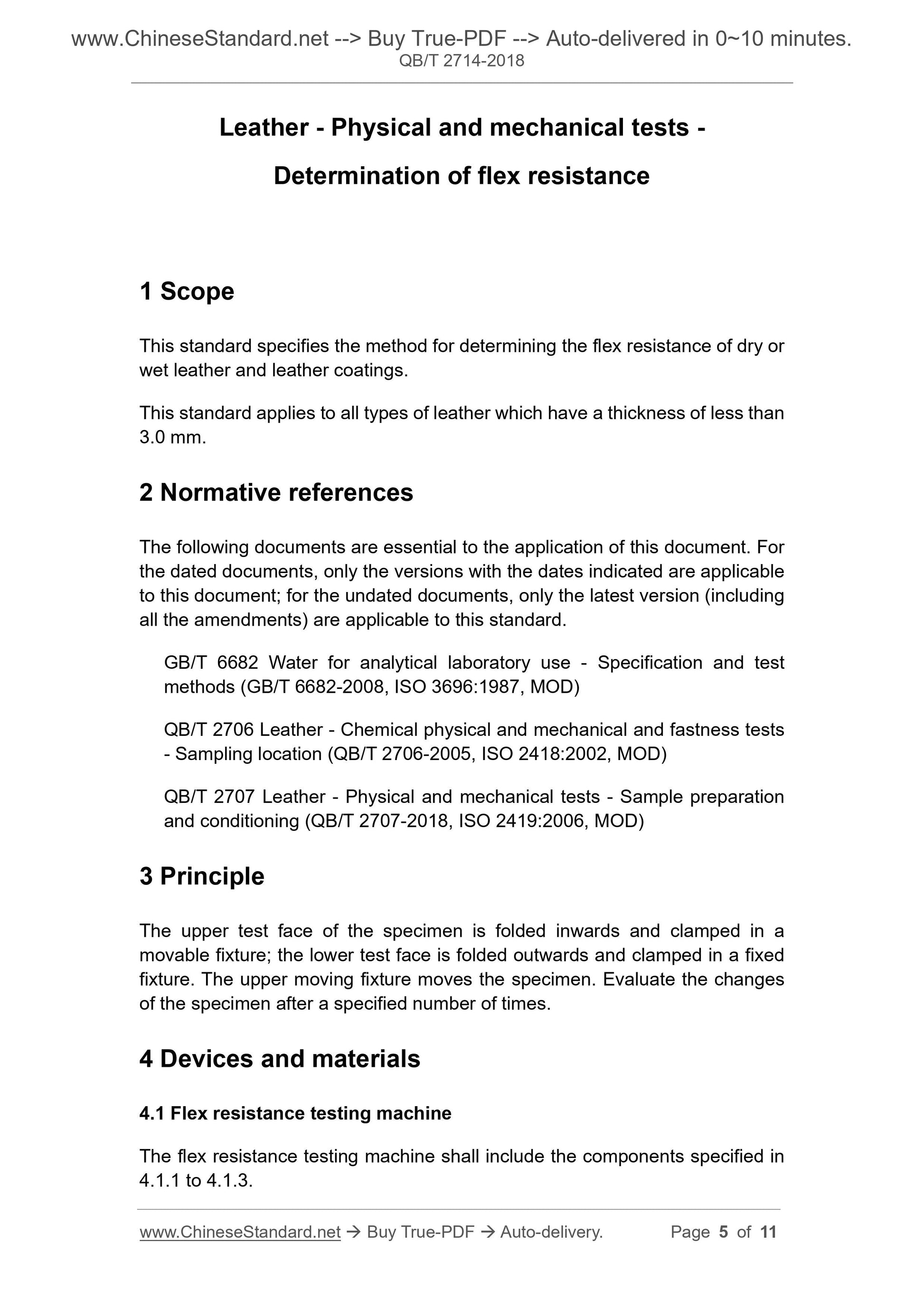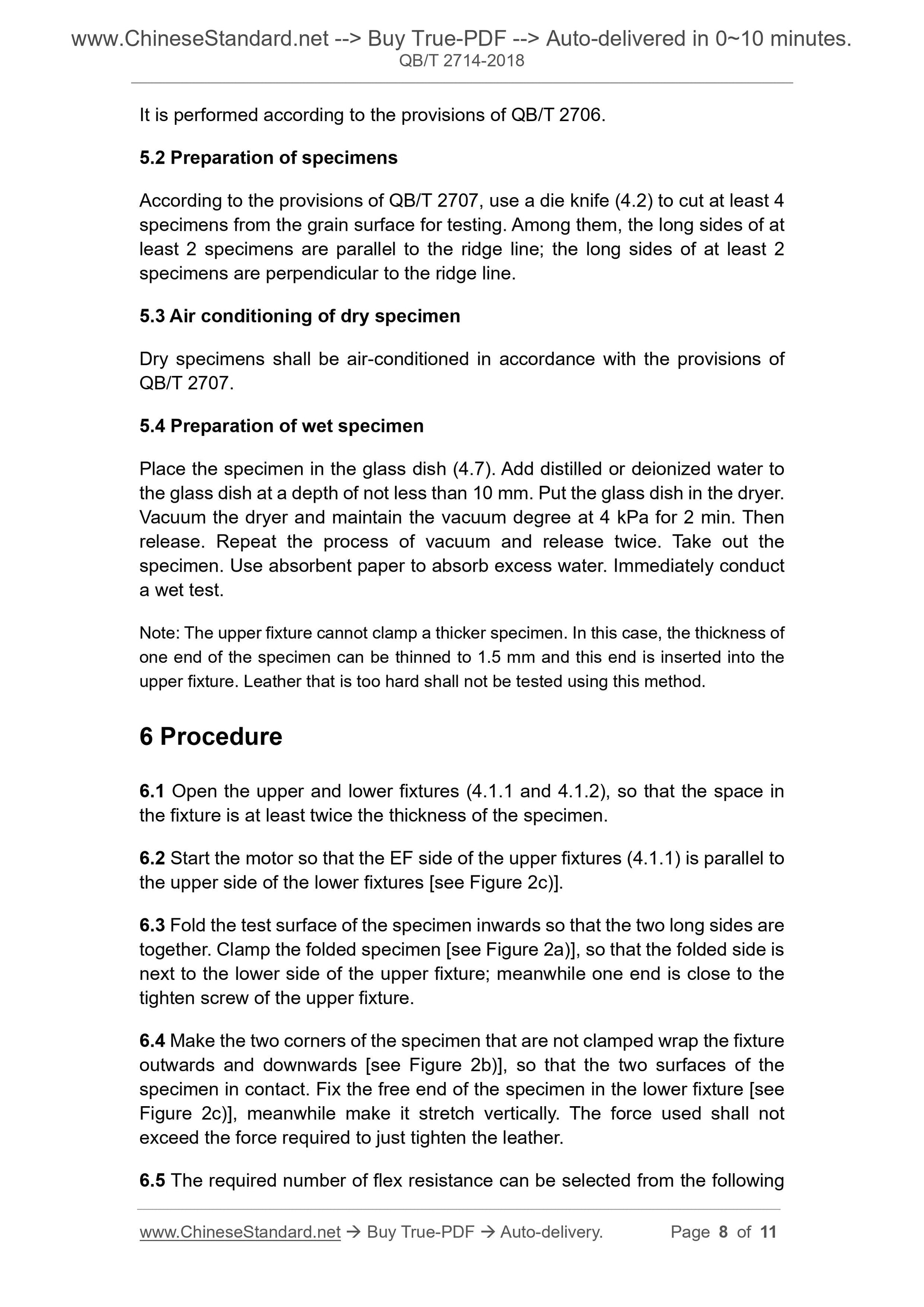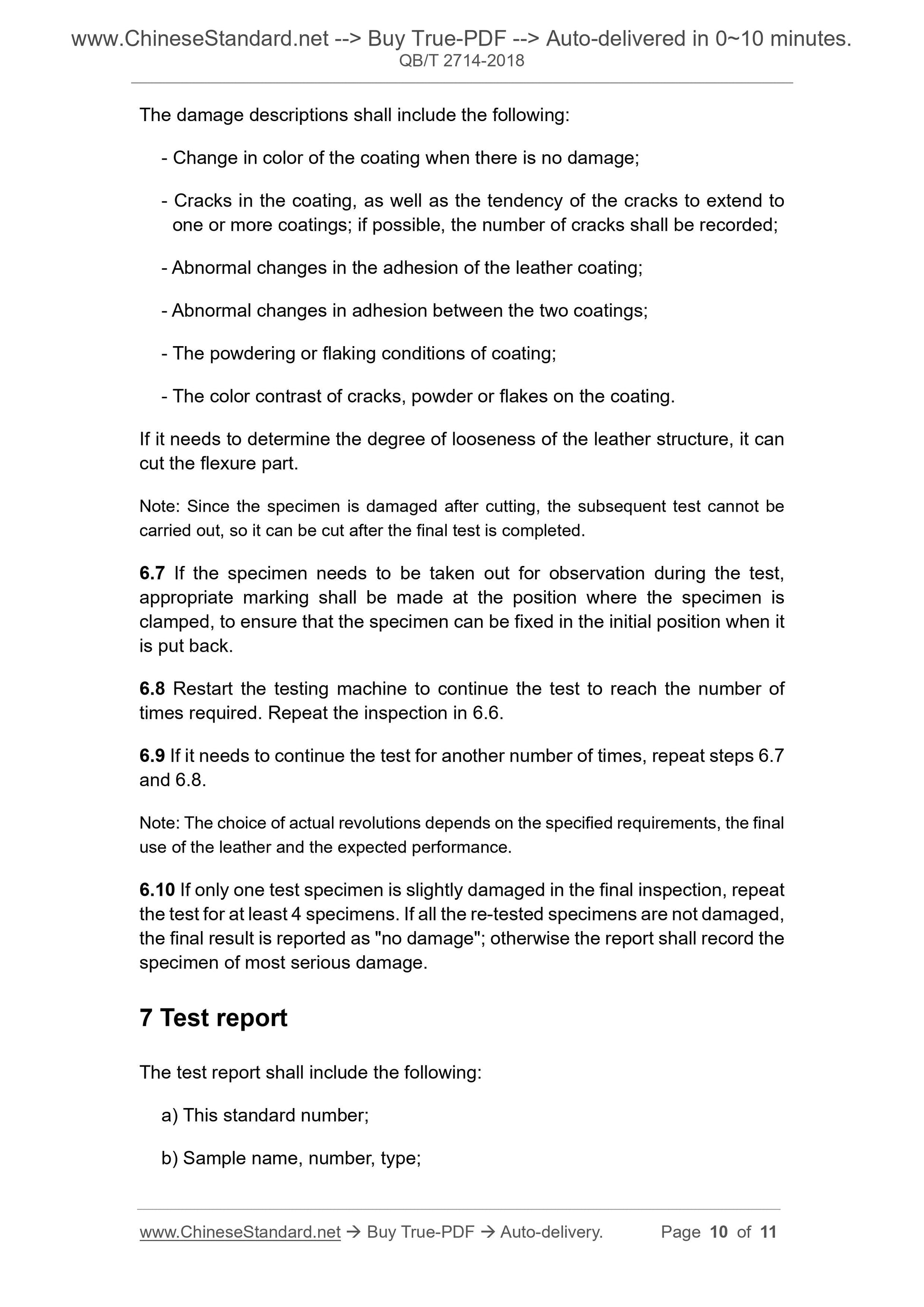1
/
of
6
www.ChineseStandard.us -- Field Test Asia Pte. Ltd.
QB/T 2714-2018 English PDF (QB/T2714-2018)
QB/T 2714-2018 English PDF (QB/T2714-2018)
Regular price
$120.00
Regular price
Sale price
$120.00
Unit price
/
per
Shipping calculated at checkout.
Couldn't load pickup availability
QB/T 2714-2018: Leather -- Physical and mechanical tests -- Determination of flex resistance
Delivery: 9 seconds. Download (and Email) true-PDF + Invoice.Get Quotation: Click QB/T 2714-2018 (Self-service in 1-minute)
Newer / historical versions: QB/T 2714-2018
Preview True-PDF
Scope
This standard specifies the method for determining the flex resistance of dry orwet leather and leather coatings.
This standard applies to all types of leather which have a thickness of less than
3.0 mm.
Basic Data
| Standard ID | QB/T 2714-2018 (QB/T2714-2018) |
| Description (Translated English) | Leather -- Physical and mechanical tests -- Determination of flex resistance |
| Sector / Industry | Light Industry Standard (Recommended) |
| Classification of Chinese Standard | Y46 |
| Classification of International Standard | 59.140.30 |
| Word Count Estimation | 6,678 |
| Date of Issue | 2018-12-21 |
| Date of Implementation | 2019-07-01 |
| Older Standard (superseded by this standard) | QB/T 2714-2005 |
| Quoted Standard | GB/T 6682; QB/T 2706; QB/T 2707 |
| Adopted Standard | ISO 5402-1:2011, MOD |
| Regulation (derived from) | Ministry of Industry and Information Technology Announcement No.67 of 2018 |
| Issuing agency(ies) | Ministry of Industry and Information Technology |
| Summary | This standard specifies the method for determining the fastness to break of dry or wet leather and leather coatings. This standard applies to all types of leather with a thickness of less than 3.0mm. |
Share
